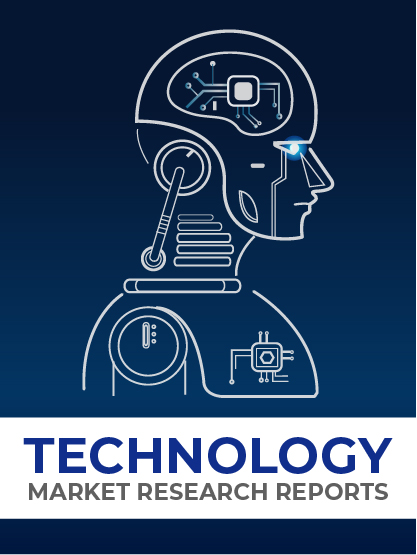
-
Report ID 138306 -
Published Date September 2024 -
Delivery Format PDF/PPT/Word -
Editor's Rating
-
Report Details
Report Overview
The worldwide Edge AI Market is projected to grow significantly from USD 19 billion in 2023 to approximately USD 163.1 billion by 2033. This growth represents a robust compound annual growth rate (CAGR) of 24.3% during the forecast period from 2024 to 2033.
Edge AI, or Edge Artificial Intelligence, represents the integration of AI technologies into edge computing environments where data processing occurs at or near the source of data generation, rather than relying on distant cloud servers. This technology is crucial in sectors where real-time data processing is critical, such as autonomous vehicles, industrial IoT, and healthcare monitoring systems.
The demand for Edge AI solutions is driven by the growing proliferation of edge computing and the IoT devices landscape. Industries such as manufacturing, automotive, and healthcare are pushing this demand as they seek to improve operational efficiencies and reduce latency in critical decision-making processes. The surge in smart city initiatives across the globe also significantly contributes to the increased adoption of Edge AI technologies, aiming to optimize everything from traffic management to energy conservation.
Several key factors are propelling the growth of the Edge AI market. The advancements in AI and machine learning algorithms, coupled with more powerful and energy-efficient processors, enable more complex applications to be handled at the edge. Furthermore, privacy concerns and data security regulations encourage processing data locally, enhancing the attractiveness of Edge AI solutions. As technology continues to evolve, these factors are expected to drive further innovations and applications in various sectors.
The future of Edge AI presents numerous opportunities, particularly in enhancing operational agility and enabling new service offerings in various industries. For instance, in healthcare, Edge AI can process patient data in real-time to provide immediate insights, which is vital for emergency responses. Additionally, the integration of Edge AI with 5G technology is anticipated to unlock potential in areas like real-time analytics, smart manufacturing, and augmented reality applications, creating new avenues for growth and development in the technology sector.
Key Takeaways
- The Edge AI Market is anticipated to achieve remarkable growth, poised to ascend to approximately USD 163.1 Billion by 2033 from USD 19 Billion in 2023. This progression represents a substantial compound annual growth rate (CAGR) of 24.3% from 2024 to 2033.
- North America holds a commanding position in the Edge AI market, maintaining a significant 39.1% market share in 2023, with revenues approximating USD 7.4 billion.
- Europe continues to exhibit a strong market presence, securing 27.8% of the market share in 2023.
- The Asia-Pacific region, fueled by swift advancements in technology and extensive expansion in telecommunications infrastructure, captured 23.0% of the market share in 2023.
- Latin America is emerging as an influential market participant, claiming 5.8% of the market share.
- Though smaller in scale, the Middle East and Africa region accounts for 4.3% of the market share.
- Within the product categories, the Hardware segment leads, constituting over 52.5% of the total market share in 2023.
- Among the industry verticals, Consumer Electronics stands out as the predominant sector, comprising 28.1% of the market in 2023.
Edge AI Market in North America
In 2023, North America maintained a dominant stance in the Edge AI market, securing over 39.1% of the market share with revenues reaching USD 7.4 billion. This significant stake underscores the region’s leadership in adopting edge computing technologies integrated with AI capabilities, largely driven by advanced technological infrastructure and the presence of major tech companies.
The increasing demand for real-time data processing and analysis in sectors like healthcare, automotive, and manufacturing, etc. has accelerated the deployment of Edge AI solutions. Moreover, North American companies are at the forefront of innovations in AI and machine learning, continually enhancing the capabilities and applications of Edge AI technologies.
The Edge AI market is significantly dominated by North America for several reasons:
- Technological Leadership: North America is home to many of the world’s leading technology companies, including major players in the AI and computing sectors. This concentration of tech giants fuels innovation and drives the adoption of cutting-edge technologies like Edge AI across various industries.
- Advanced Infrastructure: The region boasts advanced telecommunications and data processing infrastructure, which is essential for the effective deployment of Edge AI technologies. High-speed internet, widespread connectivity, and robust data centers provide the necessary backbone for Edge AI applications to function efficiently.
- Investment in Research and Development: North America consistently invests heavily in research and development activities. Both the private sector and government agencies allocate substantial resources towards the advancement of AI technologies, ensuring that the region stays at the forefront of Edge AI developments.
- Regulatory Environment: The regulatory framework in North America often supports technological innovation. Policies and initiatives that encourage the safe and ethical use of AI contribute to a business environment conducive to the growth and integration of Edge AI solutions.
- Diverse Industry Applications: The market in North America is characterized by a diverse range of industries eager to adopt Edge AI, from healthcare and automotive to manufacturing and finance. This diversity not only drives demand but also fosters a rich environment for testing and refining Edge AI applications across various real-world scenarios.
- Major Tech Giants Driving Edge AI Innovations:The region hosts several leading global tech companies, including Microsoft, IBM, Google, and NVIDIA. These industry giants make substantial investments in R&D for edge AI and drive the market forward through innovations and strategic partnerships within the tech ecosystem. For example, Microsoft and IBM have introduced notable AI-based initiatives, which enhance the adoption of edge AI technologies across various sectors.
Europe holds a significant market share of 27.8% in the Edge AI market, reflecting its strong commitment to integrating advanced technologies across various sectors.The region’s robust industrial base, particularly in manufacturing and automotive industries, has been a critical factor in adopting Edge AI solutions.Moreover, Europe’s focus on privacy and data security, especially with regulations like GDPR, has spurred innovations in Edge AI that comply with strict data handling and processing laws, making it an attractive market for deployment.
In 2023, the Asia-Pacific region accounted for 23.0% of the Edge AI market share, showcasing its rapidly growing influence in the tech sector. This growth is driven by massive technological adoption and infrastructure development across major economies such as China, Japan, and South Korea. These countries are not only investing heavily in AI and IoT technologies but are also implementing them across a wide array of industries including manufacturing, healthcare, and automotive. The push towards smart cities and digital transformation initiatives across the region further amplifies the adoption of Edge AI solutions.
Latin America and the Middle East and Africa (MEA) regions, though smaller in comparison to their global counterparts, are showing promising growth in the Edge AI market. Latin America holds a market share of 5.8%, driven by increasing digital transformation efforts across sectors like agriculture, mining, and manufacturing. Initiatives to modernize infrastructure and boost internet penetration are facilitating the adoption of IoT devices, thereby promoting the use of Edge AI technologies.
Similarly, the Middle East and Africa region, with a market share of 4.3%, is leveraging Edge AI to enhance various applications including smart city developments and energy management, especially in oil-rich nations. The MEA region’s focus on innovation and smart technology, combined with substantial investments from both private and public sectors, is gradually transforming it into a key market for Edge AI solutions.
Component Analysis
In 2023, the Hardware segment of the Edge AI market exhibited a strong performance, securing over a 52.5% share of the market. This dominance is indicative of the significant role that physical components such as processors, sensors, and edge devices play in enabling AI technologies at the local level. Hardware is crucial in Edge AI applications because it processes data directly at the source of data generation, which minimizes latency and reduces the dependency on cloud-based infrastructures.
The importance of hardware in Edge AI cannot be overstated. It includes specialized chips and advanced processors designed to efficiently handle AI tasks, such as machine learning models and neural networks, directly on the devices. This setup not only enhances processing speeds but also improves data privacy and security, as less information is transmitted over the network. Companies are increasingly investing in developing robust edge hardware solutions to cater to the growing demand for real-time, efficient, and autonomous decision-making in industries like automotive, manufacturing, and healthcare.
Also, the ongoing advancements in semiconductor technology and the introduction of 5G are further propelling the growth of the hardware segment in the Edge AI market. The enhanced connectivity offered by 5G networks significantly boosts the capabilities of edge devices, allowing for faster and more reliable communication between devices. This is particularly beneficial for applications requiring instant data analysis and response, such as in autonomous vehicles and smart city infrastructures.
The hardware segment is expected to maintain its dominance in the Edge AI market as more sectors adopt edge computing solutions for improved operational efficiency and innovation. The continual miniaturization and cost reduction of AI-capable hardware components are likely to broaden the adoption across various applications, cementing hardware’s central role in the expansion of Edge AI technologies.
End-Use Industry Analysis
In 2023, the Consumer Electronics segment emerged as a powerhouse within the Edge AI market, commanding a substantial 28.1% share. This segment’s dominance is largely driven by the increasing integration of AI technologies into everyday consumer devices such as smartphones, smartwatches, and home automation systems. Edge AI has been pivotal in enhancing the functionality and user experience of these devices by enabling faster processing and decision-making capabilities locally on the device without the need to constantly connect to the cloud.
The appeal of Edge AI in consumer electronics lies in its ability to provide real-time analytics and responses, which is essential for applications like voice-assisted controls, facial recognition for security, and immediate data processing from sensors in smart homes. For instance, smartphones utilizing Edge AI can offer personalized recommendations and superior camera functionalities without lag, relying less on server-based computations and more on local data handling.
Additionally, privacy concerns among consumers have catalyzed the adoption of Edge AI in consumer electronics. By processing data on the device itself, sensitive information does not need to be sent over the internet, thereby reducing the risk of data breaches. This feature has become a significant selling point for manufacturers aiming to appeal to privacy-conscious consumers.
Looking forward, the Consumer Electronics segment in the Edge AI market is set to expand even further as technology evolves and new applications are discovered. Innovations in AI chipsets that are more energy-efficient and capable of handling more complex tasks are likely to drive further growth. This continued innovation will ensure that Edge AI remains integral to the evolution and enhancement of consumer electronic products, making them more intuitive, secure, and user-friendly.
Key Market Segments
Component
- Hardware
- Software
- Edge Cloud Infrastructure
- Services
End-Use Industry
- Consumer Electronics
- IT & Telecom
- Healthcare
- Automotive
- Government
- Manufacturing
- Other End-Use Industries
Market Dynamics
Driver: Increased Adoption of IoT Devices
The rising adoption of Internet of Things (IoT) devices is driving the growth of the Edge AI market. IoT devices are becoming more prevalent across industries, enabling organizations to collect real-time data from sensors, machines, and other connected devices. However, transmitting massive amounts of data to cloud-based servers for analysis can be slow and expensive. Edge AI addresses this issue by processing data locally on the device, reducing latency and bandwidth usage. This enhances real-time decision-making, making it especially useful in sectors such as healthcare, manufacturing, and automotive, where quick responses are critical.
The demand for faster, more efficient data processing is propelling companies to invest in Edge AI solutions that improve operational efficiency, ensure low-latency performance, and enhance user experiences. With the continuous expansion of IoT and smart devices, the market for Edge AI is expected to see significant growth.
Restraint: Limited Computational Power at the Edge
While Edge AI offers many advantages, one of the significant restraints is the limited computational power available at the edge. Devices such as sensors, smartphones, and other embedded systems have constrained processing capabilities compared to centralized cloud infrastructures. Running AI models that require high computational resources can be challenging on these devices.
This limitation impacts the complexity and size of the models that can be deployed, making it difficult for some applications to achieve optimal performance. Additionally, the hardware costs for advanced edge devices can be prohibitive, creating a barrier to widespread adoption. As AI models grow more complex, ensuring that edge devices can keep up with the required processing power without compromising efficiency or accuracy remains a key hurdle for market expansion.
Opportunity: Growth of 5G Networks
The rollout of 5G networks presents a significant opportunity for the Edge AI market. 5G promises faster data transmission, lower latency, and higher capacity, all of which complement the strengths of Edge AI. With 5G, Edge AI devices can perform tasks that require rapid data processing and decision-making closer to the source of data.
For instance, autonomous vehicles, smart cities, and industrial automation can benefit immensely from combining Edge AI with 5G capabilities. This integration will allow more sophisticated AI applications to run on edge devices, driving innovations in areas like augmented reality (AR), virtual reality (VR), and real-time video analytics. The convergence of 5G and Edge AI is expected to create new business models and opportunities for industries seeking to leverage the power of fast, decentralized data processing.
Challenge: Security and Privacy Concerns
One of the key challenges faced by the Edge AI market is ensuring the security and privacy of data processed at the edge. Since Edge AI devices handle sensitive information, such as personal health data or financial transactions, ensuring that this data remains secure is crucial. Unlike centralized cloud systems, where robust security protocols are well-established, edge devices often lack the same level of protection.
These mentioned devices are more susceptible to hacking, malware, and other cyber threats, especially since they operate in a more distributed manner. Additionally, regulatory compliance issues regarding data privacy, such as the General Data Protection Regulation (GDPR), complicate the deployment of Edge AI in regions with strict privacy laws. Addressing these security concerns through improved encryption techniques, secure software development, and enhanced device management will be essential for the continued growth of Edge AI technologies.
Growth Factors
Rising Demand for Real-time Data Processing:
One of the primary growth factors for the Edge AI market is the increasing need for real-time data processing. As industries adopt more IoT devices and sensors, the amount of data generated is enormous. Processing this data in the cloud can lead to latency issues, especially for applications like autonomous vehicles, healthcare monitoring, or industrial automation, where instant decisions are crucial. Edge AI helps by processing data directly on the device, enabling real-time insights and reducing dependency on cloud infrastructure. This growing need for speed and efficiency is propelling the demand for Edge AI solutions.
Advancements in AI Hardware:
The continuous development of AI-specific hardware, such as AI chips, accelerators, and processors, is another factor driving the growth of the Edge AI market. These advancements have made it easier to run AI models on smaller, less power-hungry devices at the edge. Companies like NVIDIA, Intel, and Qualcomm are investing heavily in developing AI chips designed for edge devices, which are more energy-efficient and capable of handling complex computations. This evolution in hardware is opening up new possibilities for deploying AI at the edge, driving innovation across various industries and fueling market growth.
Expansion of IoT and Smart Devices:
The increasing proliferation of Internet of Things (IoT) devices and smart technologies is a major growth factor for the Edge AI market. These devices generate vast amounts of data that require real-time analysis for decision-making. Edge AI allows for local processing on the device itself, enabling faster responses and reducing the need for cloud-based data transfer. As IoT continues to expand across industries such as healthcare, manufacturing, and agriculture, the demand for AI-driven, on-device computing is rising, driving the growth of the Edge AI market.
Emerging Trends
- Integration of AI at the Edge: Devices are increasingly being equipped to process data locally, enhancing real-time decision-making capabilities and reducing latency. This enables the deployment of AI applications like natural language processing, image and speech recognition, and autonomous systems directly on the edge devices.
- 5G and Edge Computing Convergence: The rollout of 5G networks will significantly enhance edge computing capabilities, providing high bandwidth and low latency which are crucial for supporting real-time AI applications.
- Privacy and Security Focus: With more data being processed at the edge, there is a heightened focus on implementing robust security measures and privacy-preserving technologies, ensuring data integrity and compliance with regulatory standards.
- Edge-as-a-Service (EaaS): Companies are increasingly leveraging EaaS to scale their resources without massive investments in physical infrastructure. This service model provides flexibility in deploying services and computation across edge computing platforms.
- Advanced Edge Analytics: The integration of AI enhances the capabilities of edge devices to perform complex data analysis locally, enabling immediate insights and decisions without needing to send data back to central servers.
Top Use Cases for Edge AI
- Smart Cities: Edge AI is pivotal in managing urban infrastructure, such as traffic control systems, public safety monitoring, and energy management. By processing data locally at the edge, it helps in real-time decision-making, leading to more efficient city operations and improved public services.
- Autonomous Vehicles: In the automotive industry, Edge AI processes crucial real-time data for autonomous driving systems. This low-latency processing is essential for safe and efficient operation, enabling vehicles to make immediate navigational decisions and recognize potential hazards.
- Healthcare: Edge AI significantly enhances healthcare delivery by enabling real-time medical data processing, such as in diagnostic imaging and patient monitoring systems. This use case is crucial for immediate, life-saving decisions and maintaining the privacy of sensitive health data.
- Industrial IoT (IIoT): In manufacturing and industrial settings, Edge AI facilitates predictive maintenance and quality control. It processes data directly from IoT sensors on machinery, predicting equipment failures before they occur and ensuring high-quality production outputs.
- Retail: Retailers leverage Edge AI for enhanced customer experiences and operational efficiency. Applications include real-time inventory management, personalized customer service, and in-store analytics, which help in optimizing store layouts and improving customer satisfaction.
Key Players Analysis
The Edge AI market is marked by the dynamic activities of several leading companies striving to strengthen their market position. These key players are leveraging a variety of strategies, including continuous product innovation, strategic partnerships, and expanding their geographical reach so as to address the evolving needs of their customers and capture a larger market share.Among the prominent companies in the Edge AI market, NVIDIA Corporation, Intel Corporation, and Microsoft Corporation are particularly noteworthy.
Microsoft Corporation is a major player in the Edge AI market, known for its Azure IoT Edge platform, which integrates seamlessly with cloud services to offer edge computing capabilities. This technology allows businesses to process data directly on devices, reducing latency and improving real-time decision-making. Microsoft’s solutions are particularly beneficial for industries that require immediate data processing, such as manufacturing and retail.
NVIDIA Corporation, renowned for its powerful GPUs, which are vital for AI and machine learning processes. In the Edge AI domain, NVIDIA’s Jetson platform stands out by providing high-performance AI computing at the edge, suitable for robotics, embedded computing, and mobile devices. This platform helps in handling complex computations locally, enhancing efficiency and responsiveness in AI applications.
IBM has made significant strides in the Edge AI sector with its IBM Watson IoT platform. This platform is designed to bring cognitive computing to the edge, enabling devices to think, reason, and learn at the point of data collection. IBM’s edge solutions are used across various sectors, including healthcare, where they enhance patient care through real-time insights.
Intel Corporation forms a key contributor to the Edge AI market with its robust portfolio of hardware products, including CPUs and FPGA (Field Programmable Gate Array) chips, which are crucial for processing AI tasks at the edge. Intel’s technology is integral in automotive applications, facilitating advanced driver-assistance systems (ADAS) and autonomous driving functionalities.
Top Key Players in the Market
- NVIDIA Corporation
- Microsoft Corporation
- IBM Corporation
- Alphabet, Inc.
- Oracle Corporation
- Honeywell International Inc.
- Google LLC
- Intel Corporation
- Xilinx, Inc.
- Dell Technologies Inc.
- Other Key Players
Recent Developments
- July 2023- Project Helix : Dell Technologies and NVIDIA launched Project Helix, focusing on secure on-premises generative AI. This initiative simplifies AI deployment, allowing enterprises to scale edge AI solutions efficiently. The project aims to combine Dell’s hardware with NVIDIA’s AI frameworks to help businesses create AI applications that maintain data privacy while being processed at the edge
- March 2024- NVIDIA and Microsoft collaboration: These two companies collaborated to enhance Edge AI solutions. They introduced new integrations, combining Microsoft Azure’s AI capabilities with NVIDIA GPUs to support faster deployment of edge applications. This partnership is designed to streamline AI model development and deployment for industries like healthcare, allowing organizations to leverage cloud and edge AI technologies for accelerated data processing.
- May 2024 – Dell AI Product Launches: Dell unveiled its new PowerEdge XE9680L servers equipped with NVIDIA Blackwell GPUs, targeting edge AI and data center efficiency. Dell’s collaboration with NVIDIA and Microsoft deepened with new edge orchestration solutions that automate the delivery of NVIDIA AI Enterprise software.
-
Table Of Content
Research Insights & Deliverables
 Development and Future Forecast
Development and Future Forecast Competitive benchmarking
Competitive benchmarking Company Revenue Statistics
Company Revenue Statistics Rising Regional Opportunities
Rising Regional Opportunities Technology Trends and Dynamics
Technology Trends and Dynamics Technology Assessment
Technology Assessment
-
Inquiry Before Buying
Research Insights & Deliverables
 Development and Future Forecast
Development and Future Forecast Competitive benchmarking
Competitive benchmarking Company Revenue Statistics
Company Revenue Statistics Rising Regional Opportunities
Rising Regional Opportunities Technology Trends and Dynamics
Technology Trends and Dynamics Technology Assessment
Technology Assessment
-
Request Sample
Research Insights & Deliverables
 Development and Future Forecast
Development and Future Forecast Competitive benchmarking
Competitive benchmarking Company Revenue Statistics
Company Revenue Statistics Rising Regional Opportunities
Rising Regional Opportunities Technology Trends and Dynamics
Technology Trends and Dynamics Technology Assessment
Technology Assessment














